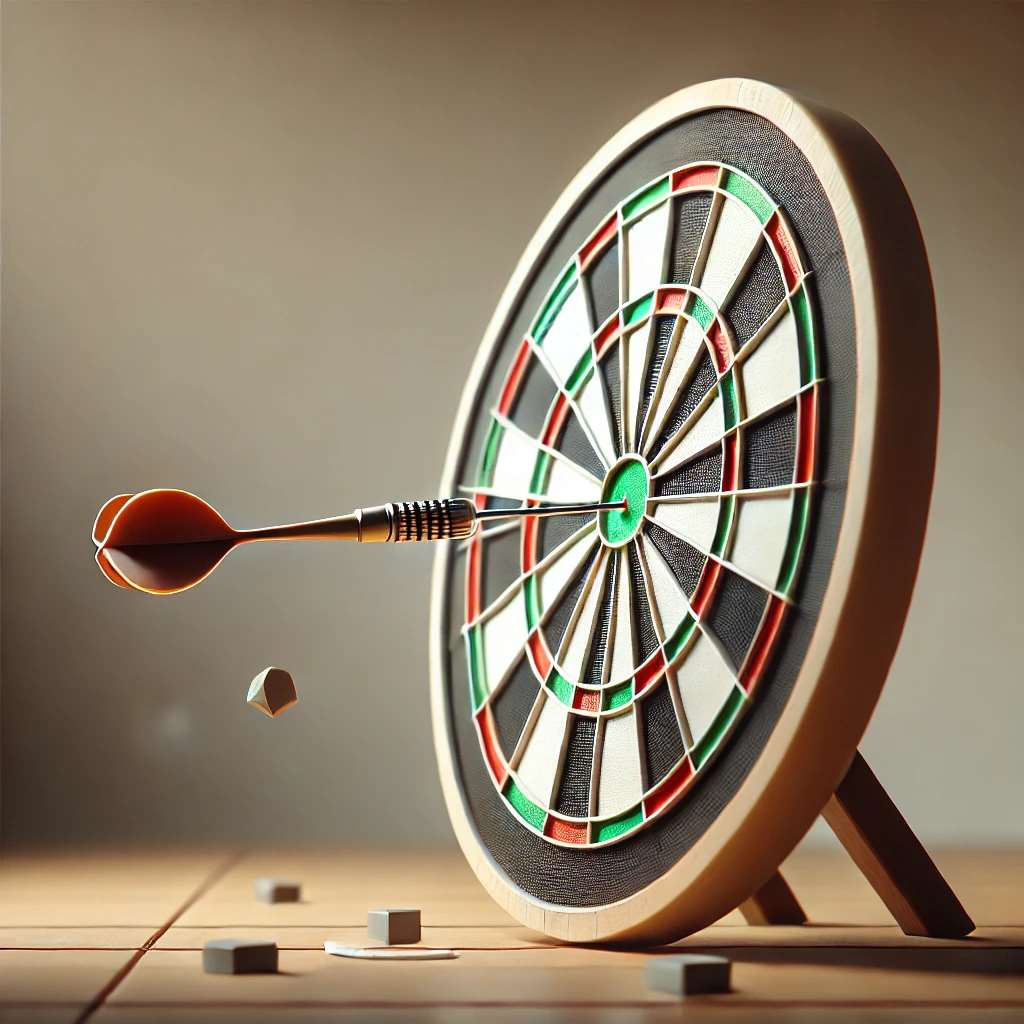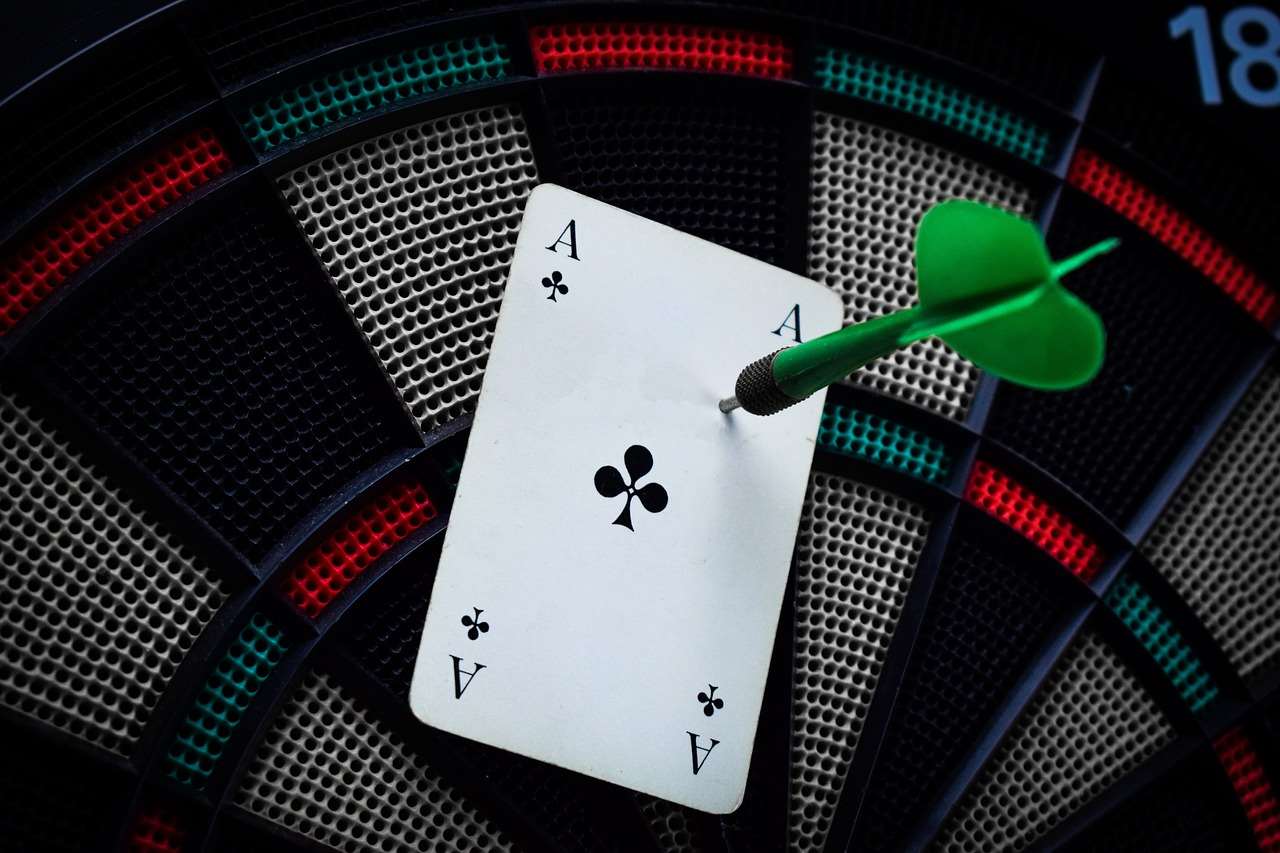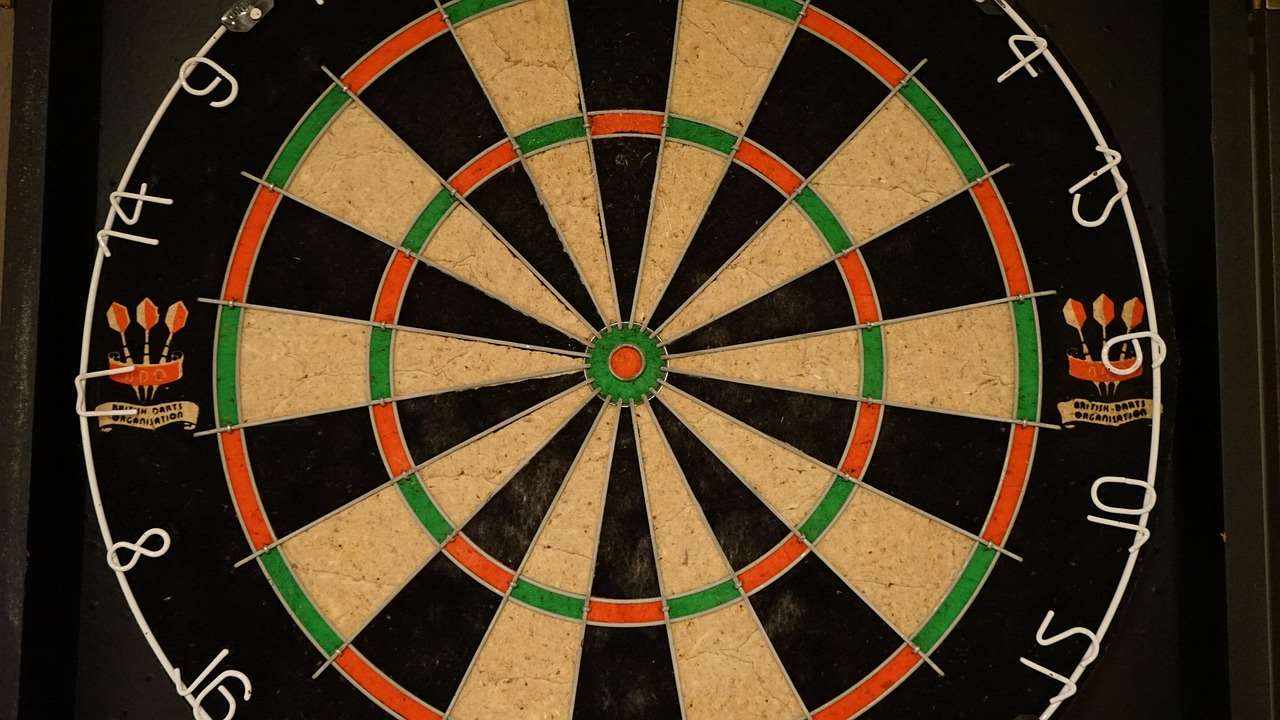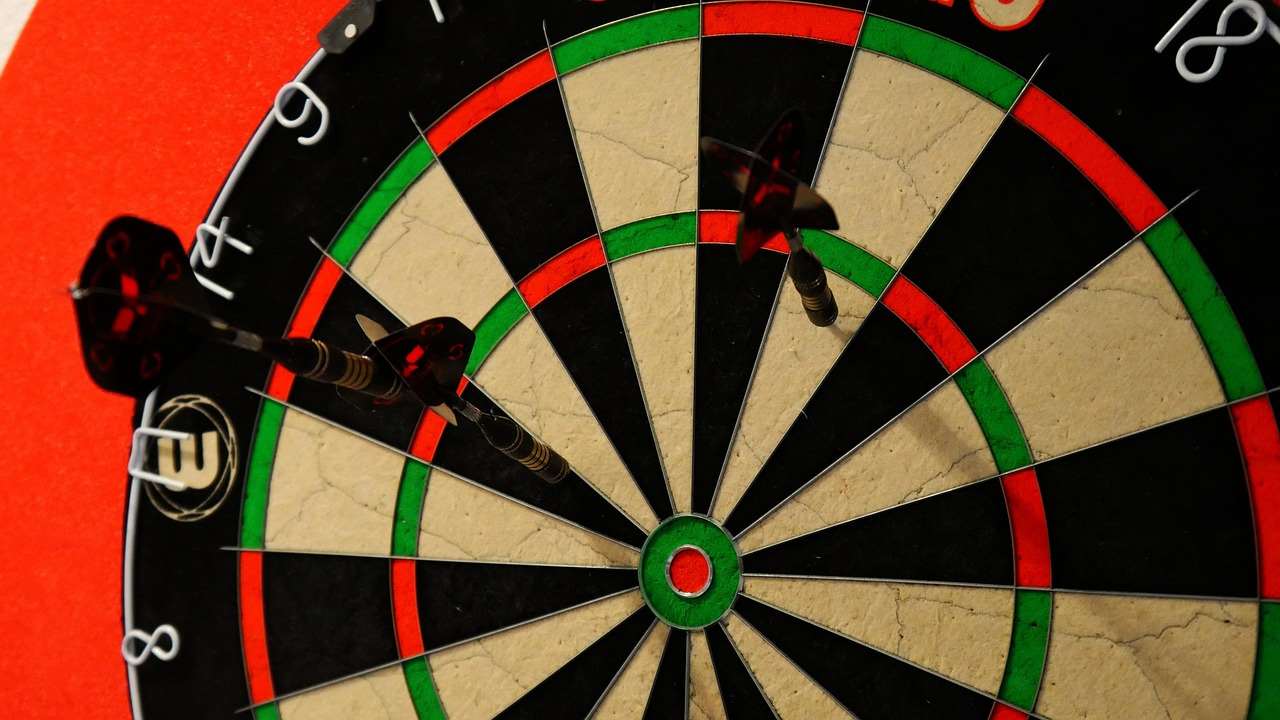Understanding the dart game points system is crucial for enjoying and excelling in this popular sport, as it dictates how scores are calculated and determines the winner; therefore, in its simplest form, it involves accumulating points by hitting numbered sections on the dartboard, with the first player to reach a predetermined target score (usually zero in standard 501) declared the victor. In this comprehensive guide, we’ll delve into the intricacies of dart scoring, explore different game variations, and offer tips for improving your accuracy.
⚠️ Still Using Pen & Paper (or a Chalkboard)?! ⚠️
Step into the future! The Dart Counter App handles all the scoring, suggests checkouts, and tracks your stats automatically. It's easier than you think!
Try the Smart Dart Counter App FREE!Ready for an upgrade? Click above!
Understanding the Basics of the Dart Game Points System
At its core, the dart game points system relies on the numbered sections on the dartboard. These sections range from 1 to 20, and each is divided into segments that multiply the base score. Learning these sections and their multipliers is the first step towards mastering the game. Key components of the dartboard include:
- Single Sections: The main numbered sections representing their face value.
- Double Ring: The outer ring, which doubles the value of the corresponding number. Hitting double 20 scores 40 points.
- Treble Ring: The inner ring, which triples the value of the corresponding number. Hitting treble 20 scores 60 points.
- Bullseye: The center of the board, worth 50 points.
- Outer Bull (Single Bull): The ring surrounding the bullseye, worth 25 points.
These elements form the foundation of the dart game points system, allowing players to strategically aim for specific areas to maximize their scores. Understanding these elements is essential to developing a sound strategy.

Common Dart Games and Their Scoring
While the basic principles of the dart game points system remain consistent, various games utilize different scoring methods and objectives. Here are some of the most popular:
501/301
This is the most widely played dart game. Each player starts with a score of 501 (or 301) and must reduce it to zero. The catch? The final dart must land in a double or the bullseye. If a player scores more than they need, resulting in a score of one or less, or reduces their score to one without hitting a double, the round is bust, and the score reverts to what it was at the start of that round. This introduces a tactical element to the game known as “checkout” or “finishing.” Using a darts point chart can assist in these situations.
Cricket
Cricket involves “closing” specific numbers on the board (20, 19, 18, 17, 16, 15, and the bullseye). To close a number, a player must hit it three times (either as three singles, a single and a double, or a treble). Once a number is closed by a player, only they can score points on it. The opponent must then close the number themselves to prevent the first player from continuing to score on it. The game ends when a player closes all required numbers and has a points lead or when both players have closed all the required numbers, and the player with the higher score wins. It’s vital to understand this unique application of the dart game points system.
Around the Clock (or Around the World)
This game is perfect for practicing accuracy. Players must hit each number on the board in sequential order, starting with 1, then 2, 3, and so on, up to 20. The first player to hit all the numbers in order wins. Variations can include hitting doubles or trebles as well, making it more challenging.
Killer
Killer is a game where players first establish a personal number by throwing a dart with their non-dominant hand. They then need to hit that number three times to become a “killer.” Once a player is a killer, they can target other players’ numbers, eliminating them from the game if they reduce their “lives” (three hits on their number) to zero. The last player standing wins.

Strategic Tips for Improving Your Dart Game Points System
Improving your dart game points system involves not just understanding the rules but also employing strategic techniques. Here are a few tips:
- Master the Checkout: Learn common checkout combinations in 501/301. Knowing which numbers to aim for to leave yourself on a double is crucial. Many use a Digital dart score app (https://dartcounterapp.com/) to assist with this.
- Focus on Accuracy: Practice hitting specific targets consistently. Aim for the treble 20, double 20, and bullseye to maximize your score.
- Develop a Consistent Throw: Maintain a smooth, repeatable throwing motion. Consistency is key to accuracy.
- Mental Game: Stay calm and focused, especially under pressure. Visualize your throws and maintain a positive attitude.
- Use Quality Equipment: Invest in a good set of darts that suits your grip and throwing style. Experiment with different dart shaft grip options to find what works best.
Advanced Dart Scoring Techniques
Once you’ve grasped the basics, you can explore more advanced scoring techniques to further enhance your dart game points system and overall performance.
Utilizing the “Shanghai”
The “Shanghai” finish is a less common but potentially game-winning move. It involves hitting a single, double, and treble of the same number in the same round. This results in an instant win. While difficult to achieve intentionally, being aware of the possibility can add another layer to your strategy. The idea of a shanghai darts finish can be quite exciting.
Strategic Number Selection
In games like Cricket, choosing which numbers to target is crucial. Prioritize closing high-scoring numbers like 20 and 19 first. If your opponent is weak on a particular number, focus on scoring heavily on it to put them at a disadvantage.
Understanding Probabilities
Experienced players understand the probabilities of hitting certain areas of the board. For example, if aiming for treble 20, there’s a higher chance of hitting single 20 or single 5 (adjacent segments) than hitting the treble 1. Understanding these probabilities can influence your decision-making and aiming adjustments.

The Psychological Side of the Dart Game Points System
While physical skill and strategic knowledge are important, the psychological aspect of darts can significantly impact your dart game points system. Mental toughness, focus, and the ability to handle pressure are essential for consistent performance.
Managing Pressure
Playing in competitive matches or against skilled opponents can induce pressure. Develop strategies for managing this pressure, such as deep breathing exercises, visualization techniques, or focusing on your pre-throw routine.
Staying Focused
Maintaining focus throughout a match is crucial. Distractions, negative thoughts, or lapses in concentration can lead to missed throws. Practice mindfulness techniques to improve your ability to stay present and focused on the task at hand.
Building Confidence
Confidence is a key ingredient for success in darts. Believe in your abilities, celebrate your successes, and learn from your mistakes. A positive mindset can significantly improve your performance. It’s also important to recognize that, just like darts yesterday, even the pros have off days.
Dartboard Setup and Maintenance
The quality and condition of your dartboard can also affect your dart game points system. Proper setup and regular maintenance are essential for optimal performance.
Dartboard Height and Distance
The standard height from the floor to the center of the bullseye is 5 feet 8 inches (1.73 meters). The oche (throwing line) should be 7 feet 9.25 inches (2.37 meters) from the face of the dartboard. These dimensions are crucial for fair play and consistent practice.
Dartboard Rotation
Regularly rotating your dartboard helps to distribute wear and tear evenly, prolonging its lifespan. Focus on rotating to sections where darts are less frequently thrown. This is especially important as consistent use can cause deterioration.
Board Maintenance
Keep your dartboard clean and free from debris. Use a soft brush to remove loose fibers or dust. Avoid using liquids or solvents, as these can damage the board. Also, make sure your dart flights variety pack is stocked for consistent gameplay!

Exploring Different Dart Styles
The dart game points system isn’t just about the board; it’s also about your unique style. Different players adopt different grips, stances, and throwing motions. Experiment with various techniques to find what works best for you.
Grip Variations
There are numerous dart grips, ranging from holding the dart at the very front to gripping it further back. The best grip depends on your hand size, finger length, and personal preference. Experiment to find a grip that feels comfortable and secure.
Stance Options
The stance is how you position your body relative to the oche and the dartboard. Common stances include a side-on stance, a forward stance, and an angled stance. Again, the ideal stance depends on your body mechanics and comfort level.
Throwing Motion
The throwing motion should be smooth and controlled. Avoid jerky movements or excessive arm swing. Focus on using your wrist and forearm to generate power. Practice your throwing motion regularly to develop consistency.
Adapting Your Strategy Based on Opponent
An often overlooked aspect of mastering the dart game points system involves adapting your strategy based on your opponent’s strengths and weaknesses.
Identifying Weaknesses
Pay attention to your opponent’s tendencies. Do they struggle with certain numbers? Are they inconsistent on doubles? Exploit these weaknesses to gain an advantage. This is especially relevant when considering whether is the darts championship on today, and observing pro strategies.
Countering Strengths
Similarly, be aware of your opponent’s strengths. If they are strong on treble 20, try to block them by closing that number in Cricket or by forcing them to aim elsewhere. You might even consider using dart single out chart to switch up your strategy.

Conclusion
Mastering the dart game points system is an ongoing journey that requires dedication, practice, and a strategic mindset. By understanding the scoring rules, exploring different game variations, honing your accuracy, and developing your mental game, you can significantly improve your performance and enjoyment of this classic sport. Remember to experiment with different styles, adapt your strategies, and never stop learning. So, pick up those darts, aim for the bullseye, and embrace the challenge. Ready to take your dart game to the next level? Head down to your local dart shop and get the equipment you need today!
Hi, I’m Dieter, and I created Dartcounter (Dartcounterapp.com). My motivation wasn’t being a darts expert – quite the opposite! When I first started playing, I loved the game but found keeping accurate scores and tracking stats difficult and distracting.
I figured I couldn’t be the only one struggling with this. So, I decided to build a solution: an easy-to-use application that everyone, no matter their experience level, could use to manage scoring effortlessly.
My goal for Dartcounter was simple: let the app handle the numbers – the scoring, the averages, the stats, even checkout suggestions – so players could focus purely on their throw and enjoying the game. It began as a way to solve my own beginner’s problem, and I’m thrilled it has grown into a helpful tool for the wider darts community.